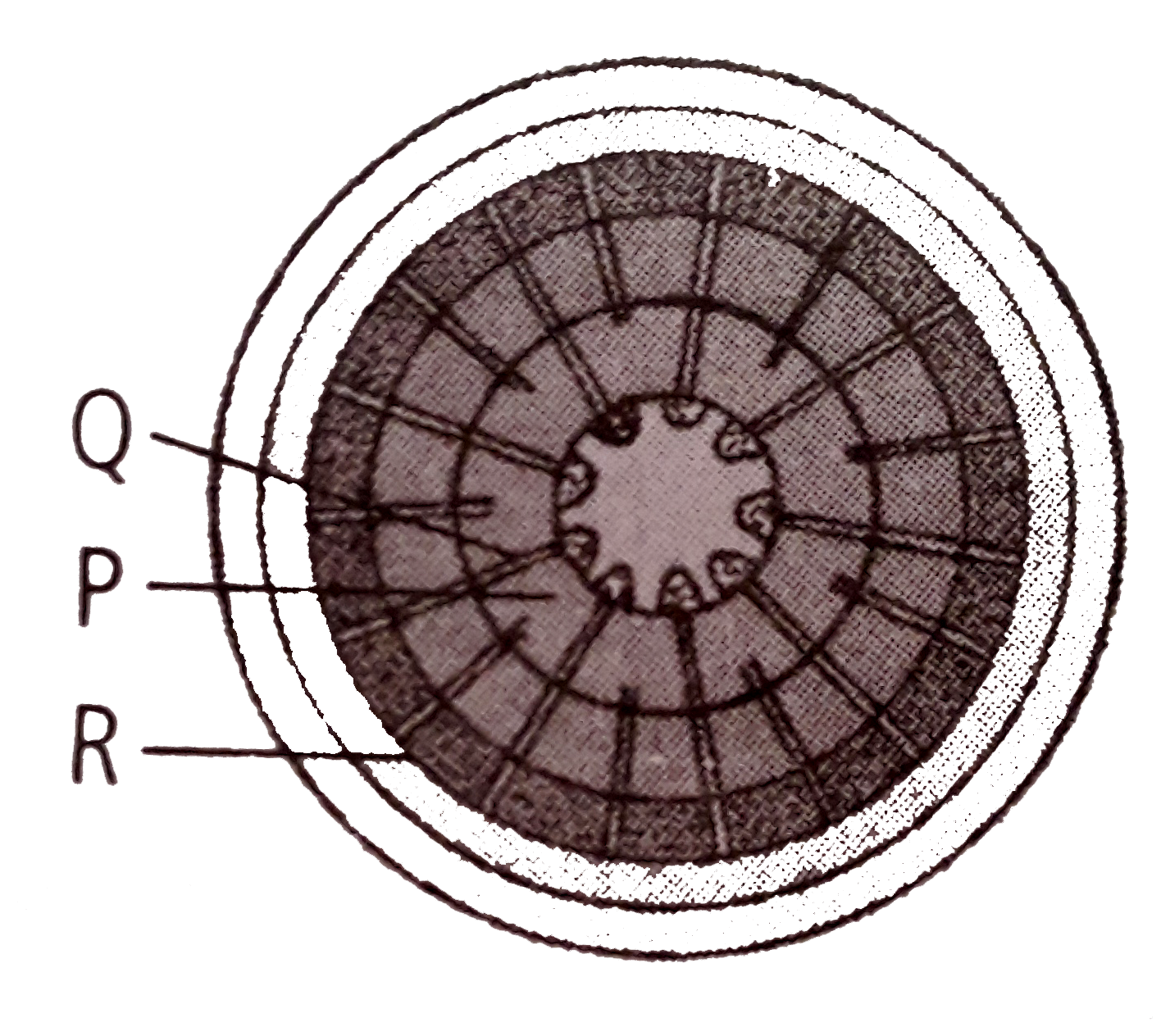Identify the correct Statement with respect to secondary growth in dicot roots .
a. Vascular cambium arises from the parenchyma.
b. This secondary meristem is known as interfascicluar cambium
c . The outer layer of pericycle given rise to the phellogen .
d. Growth rings are well Marked and distinct .
a,b
b,c
a,c
b,d
The correct Answer is:C
To solve the question regarding secondary growth in dicot roots, we will analyze each statement one by one to determine which are correct.
1. Statement A: Vascular cambium arises from the parenchyma.
- Analysis: This statement is correct. The vascular cambium in dicot roots is indeed derived from the parenchyma cells that become meristematic. These cells are located between the primary xylem and primary phloem and differentiate to form secondary xylem and phloem.
- Conclusion: Statement A is true.
2. Statement B: This secondary meristem is known as interfascicular cambium.
- Analysis: This statement is incorrect. The correct term for the cambium located between the vascular bundles (xylem and phloem) is "intrafascicular cambium," not "interfascicular cambium." Interfascicular cambium refers to the cambium that forms between the vascular bundles.
- Conclusion: Statement B is false.
3. Statement C: The outer layer of pericycle gives rise to the phellogen.
- Analysis: This statement is correct. The outer layer of the pericycle, which is located just inside the endodermis, can differentiate to form phellogen (cork cambium), contributing to the formation of the periderm.
- Conclusion: Statement C is true.
4. Statement D: Growth rings are well marked and distinct.
- Analysis: This statement is false. In dicot roots, growth rings are not well marked or distinct. Unlike woody stems, where growth rings can be easily observed, the growth in roots does not typically produce distinct rings.
- Conclusion: Statement D is false.
Final Conclusion:
From the analysis, the correct statements regarding secondary growth in dicot roots are:
- Statement A: True
- Statement C: True
Thus, the correct answer is that both statements A and C are true.
- Analysis: This statement is correct. The vascular cambium in dicot roots is indeed derived from the parenchyma cells that become meristematic. These cells are located between the primary xylem and primary phloem and differentiate to form secondary xylem and phloem.
- Conclusion: Statement A is true.
- Analysis: This statement is incorrect. The correct term for the cambium located between the vascular bundles (xylem and phloem) is "intrafascicular cambium," not "interfascicular cambium." Interfascicular cambium refers to the cambium that forms between the vascular bundles.
- Conclusion: Statement B is false.
- Analysis: This statement is correct. The outer layer of the pericycle, which is located just inside the endodermis, can differentiate to form phellogen (cork cambium), contributing to the formation of the periderm.
- Conclusion: Statement C is true.
- Analysis: This statement is false. In dicot roots, growth rings are not well marked or distinct. Unlike woody stems, where growth rings can be easily observed, the growth in roots does not typically produce distinct rings.
- Conclusion: Statement D is false.
From the analysis, the correct statements regarding secondary growth in dicot roots are:
- Statement A: True
- Statement C: True
Similar Questions
Knowledge Check

During the secondary growth in a dicotyledonous stem, the fusiform initials of vascular cambium give rise to which of the given labelled part?APBRCQDboth a and b
Assertion (A) Secondary growth in dicot roots occur with the help of vascular cambium and phellogen.
Reason (R ) Vascular cambium is formed from conjuctive parenchyma and part of pericycle.
View SolutionIn dicot root, cambium develops from secondary meristem. First to happen during secondary growth is
View SolutionIdentify the statements as true (T) or false (F) w.r.t secondary growth in root and choose the correct option.
I. Vascular cambium is partially secondary in origin.
II. Vascular cambium is formed as continuous and complete but wavy ring.
III. Cork cambium arises from cortical cells.
View SolutionIn an old stem, the oldest secondary xylem is found just
(a) inner to vascular cambium
(b) outside primary xylem
(c) outside vascular cambium
(d) inner to phellogen
View SolutionIn dicot roots, initiation of lateral roots and vascular cambium during the secondary growth takes place by________cells.
View SolutionHow many of the following meristems are completely secondary in origin ?
A. Cork cambium of a dicot stem
B. Vascular cambium of a dicot stem
C. Cork cambium of a dicot root
D. Vascular cambium of a dicot root
View SolutionThe primary growth is affected by
(a) Primary cambium
(b) Apical meristems
(c) Cambium
(d) Secondary cambium
View Solution
